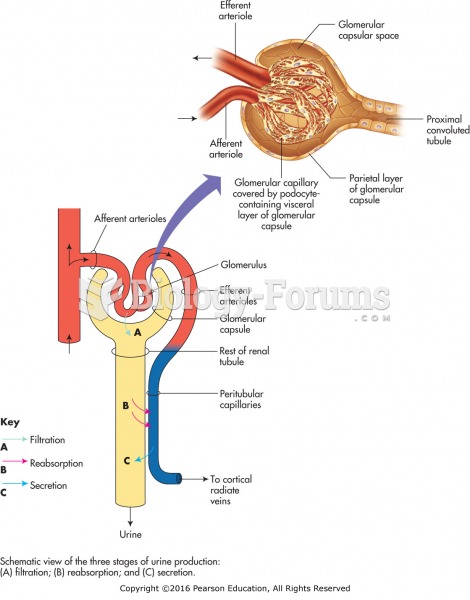|
|
|
The B-complex vitamins and vitamin C are not stored in the body and must be replaced each day.
The ratio of hydrogen atoms to oxygen in water (H2O) is 2:1.
Cyanide works by making the human body unable to use oxygen.
A serious new warning has been established for pregnant women against taking ACE inhibitors during pregnancy. In the study, the risk of major birth defects in children whose mothers took ACE inhibitors during the first trimester was nearly three times higher than in children whose mothers didn't take ACE inhibitors. Physicians can prescribe alternative medications for pregnant women who have symptoms of high blood pressure.
In 2010, opiate painkllers, such as morphine, OxyContin®, and Vicodin®, were tied to almost 60% of drug overdose deaths.







